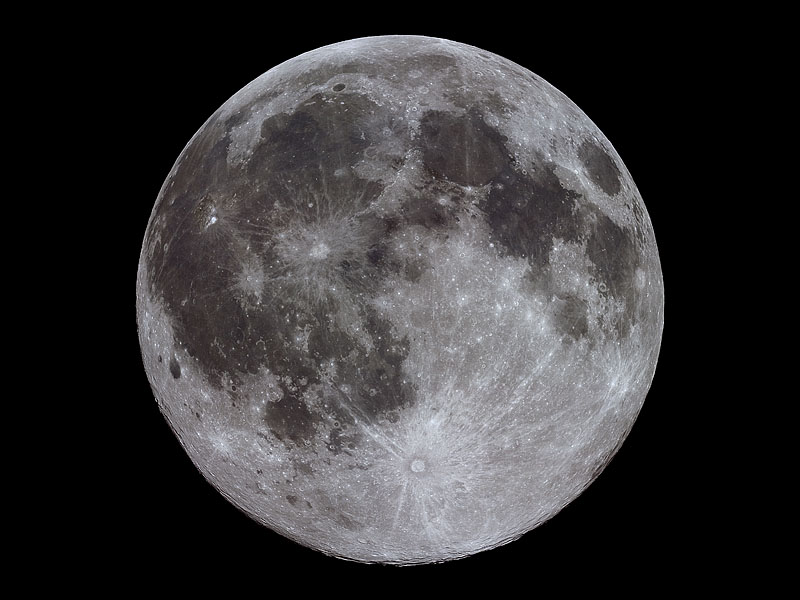
 |
The Full Moon |
|||||||||||||||
About This PhotographHere is Earth's nearest natural satellite, the Moon, nearly fully illuminated by the sun. This occurs every 29 1/2 days as the Moon moves in its orbit to a position opposite the Earth from the sun. If the alignment is just right, the Moon passes through the shadow of the Earth, resulting in a lunar eclipse. Most of the time, though, we just see a full moon. Visible here are the full array of lunar features. Dark, somewhat round areas are the "maria," once thought to be bodies of water. In reality they are ancient impact basins that became filled with molten lava, which then cooled. The lighter areas are ancient, rugged mountainous areas, the lunar highlands, and are much more heavily cratered than the maria due to their longer history. At the bottom of the image is the great crater, Tycho. The massive impact that formed this feature flung material from the lunar surface far and wide, resulting in the ray system we now see. Other notable craters are visible as well, including Copernicus, to the upper left of center. Crater Kepler is to the left and slightly south of this, and bright Artistarchus, with its fascinating colored plateau, is north and to the left of Kepler. | |||||||||||||||
|
|||||||||||||||